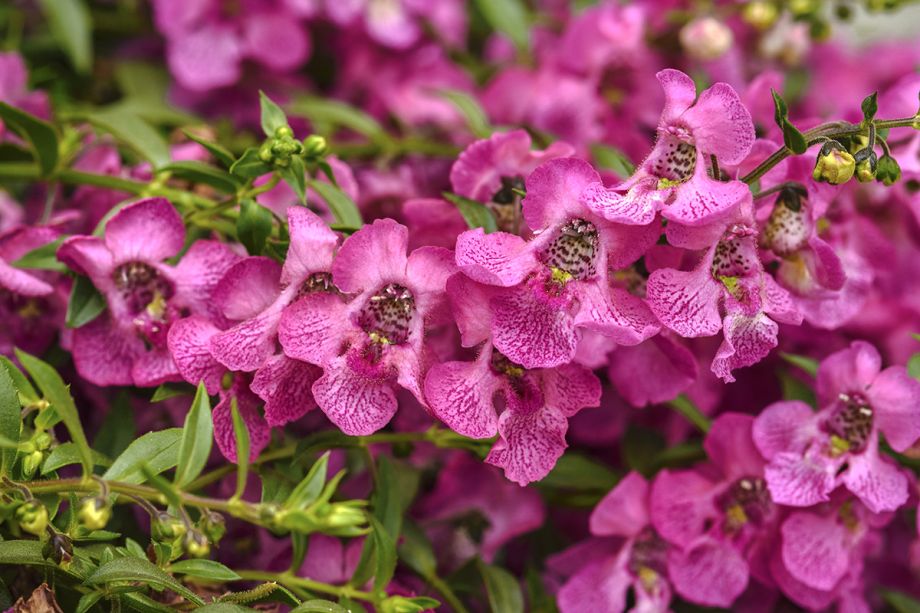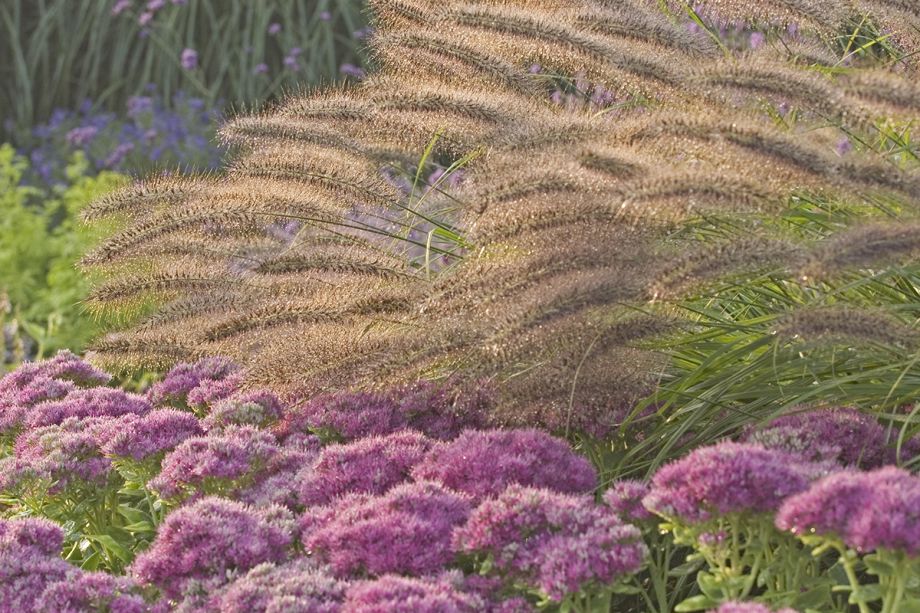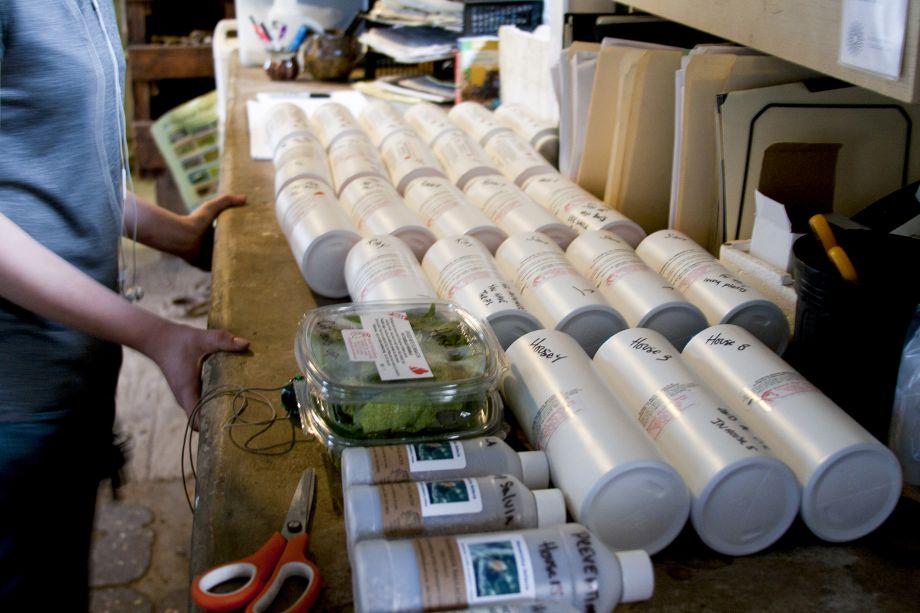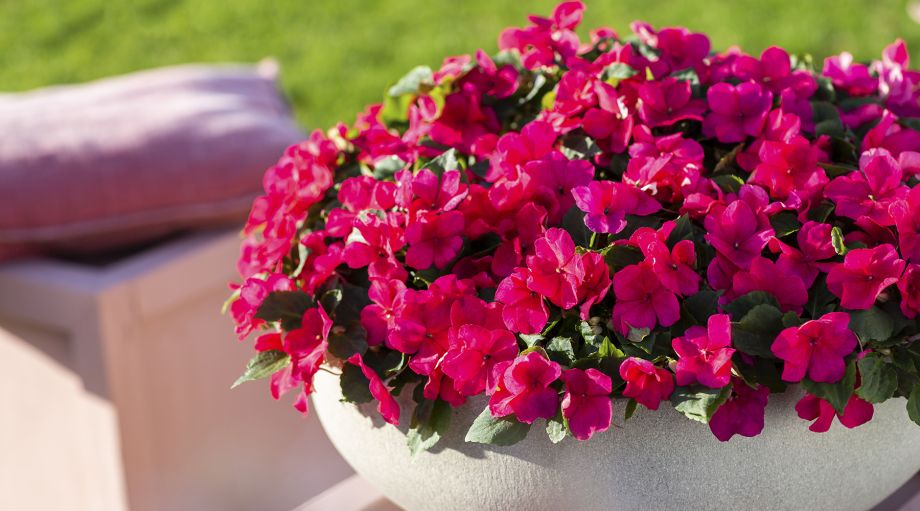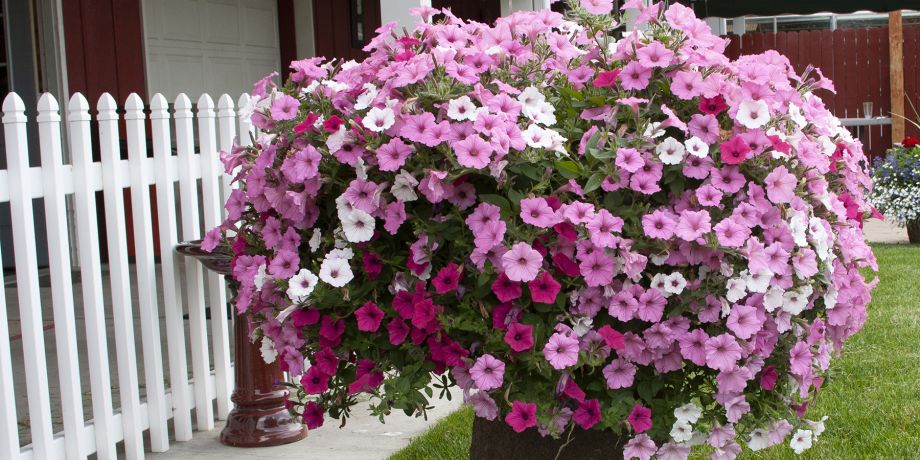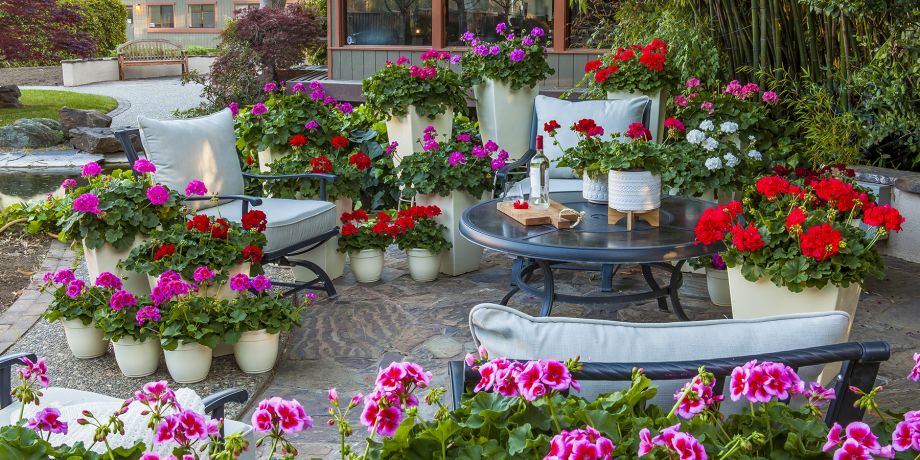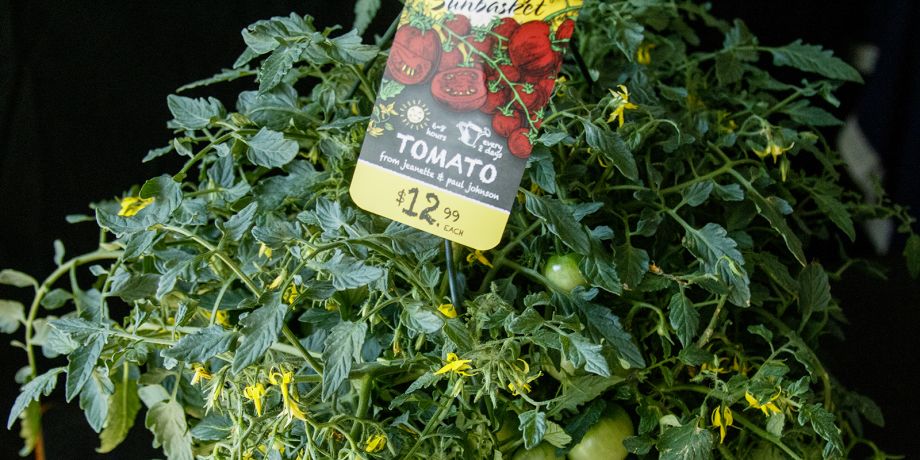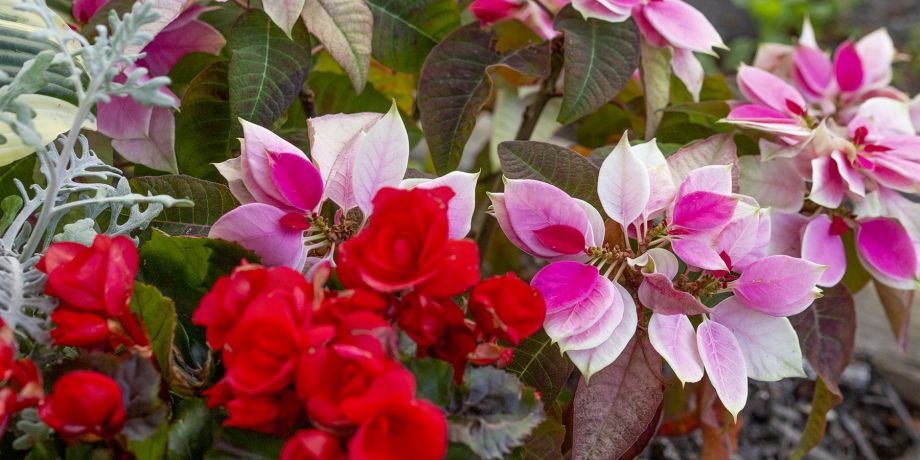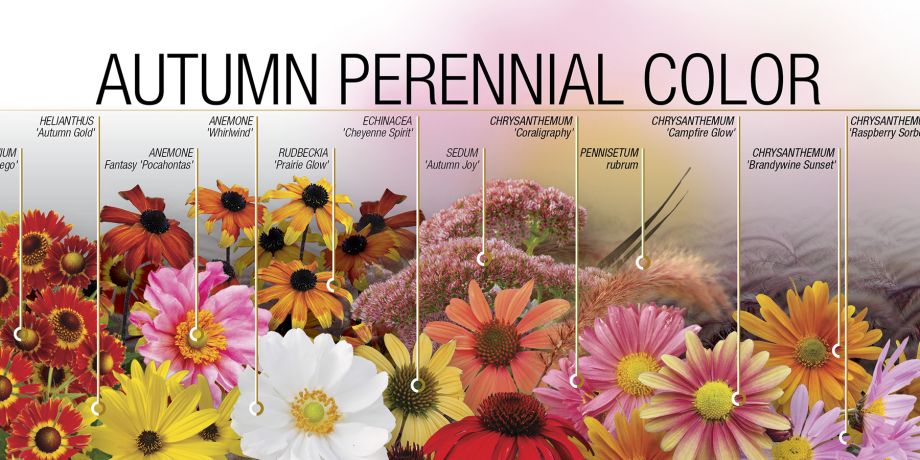Body of Writing
A list of recent horticultural writings,
decending in chronological order.
Written for GrowerTalks
Pycnanthe-Whom?
This year’s Perennial Plant of the Year award goes to an admittedly obscure selection, Pycnanthemum muticum. Attracting a wide range of beneficials is the pycnanthemum’s signature. Big bees, little bees (basically lots of bees), wasps, moths, caterpillars, and beetles all enjoy the nectar along with the shelter the habit provides. It outperforms superpollinators like salvia, and makes a natural...
Written for Green Profit
Deer Shifting Your Inventory
Deer populations ebb and flow, putting pressure on many neighborhoods. This is especially true in the garden-rich suburban ring that surrounds most urban centers. Deer pressure subsequently impacts garden center revenues as gardeners abandon old favorites in search of deer-resistant substitutes.
Deer shifting, then, is an important skill a modern garden center can use to forecast and manage pl...
Written for GrowerTalks
The Angelonia Tool Belt
Summer snapdragons do more jobs than they did in the past. The shortest ones tip their stems down as low as 8 to 10 in. from the ground, whereas the big varieties can reach 30 to 36 in. high. As a rough rule, standard height seed varieties are used in the landscape as mass plantings, due to their costs. Vegetative varieties take on drama or specialty roles. Until this year, the category had two...
Written for GrowerTalks
Making Coin with Monarda
Revenues have grown over the past decade, bumping Monarda from a C-tier specialty to a B-tier product capable of chugging significant sales year over year. Past sins had included aggressive spreading, intimidating height, and powdery mildew but modern breeding has cleaned out these issues. Blessings include a pretty and distinctive flower, with native and pollinator awareness growing among the ...
Written for GrowerTalks
Hula: The Wide-Bodied Wax Begonia
Spreading is one of those rubber words capable of stretching across different products. Spreading in a petunia is not like spreading in a pansy or in a begonia—[record scratch]—wait. Wax begonias are shaped like gum drops or corn muffins. How exactly do they spread?
Width is the significant feature here. According to the Dutch breeders at PanAmerican, the Hula crown grows outward more than upw...
Written for Green Profit
Late Season Perennials
When you’re thinking about your autumn program, think about perennials. August heat often exhausts the color from summer gardens, turning spring color into summer green. Perennials offer a number of choices for late summer and early fall blooming, or simply for colorful foliage.
Another key selling point: perennials return year after year. A good chunk of customers look for that once-and-done ...
Written for GrowerTalks
The Heart of Hardy Pennisetums
Hardy pennisetums are those mid-height grasses with the foxtail plumes, the ones that handle winter down to at least zone 6. Others exist, like rubrum, Fireworks, or Vertigo, but the industry treats them as decor annuals. Most hardy cultivars are seedlings of the alopecuroides species (still a strong seller) or occasionally orientale. A phenomenon of this grass is that seedlings don't always co...
Written for GrowerTalks
The Market Structure of Vinca
Vinca series often deploy as fraternal twins, upright and spreading. Think Cora | Cora Cascade and Titan | Mediterranean. They emerge from the same breeding teams with the same philosophies, so they are often lumped together in discussions.
Trailing vincas work well in baskets, but they also knit together into a solid bed, covering the soil. Vincas in baskets also received a boost from the imp...
Written for Green Profit
Designing with Wax Begonias
Let’s organize our tools before designing with wax begonias. Size is most important because it controls the volume up and out: the larger the plant, the larger the flowers and foliage. Leaf color comes next and can be dark (bronze) or light (green), setting your canvas. Flower color is third, acting as the accent. White, pink, and red blooms are available in all cases, with rose and bicolors sc...
Written for Green Profit
IPM: A Retail Perspective
Biologicals have entered the mainstream as a viable alternative to pesticides among wholesale plant producers. Can retailers benefit from the same trends when planning their integrated pest management (IPM) systems? The answer is a qualified yes, depending on the size of the problem.
A quick check is the frequency of spraying. If you don’t need to hit your plants often, just keep doing what yo...
Written for GrowerTalks
The Strengths Behind Phlox Subulata
Among the perennials, Phlox subulata often opens the catagory for early spring sales with vibrant color on the heels of pansies and forsythia. Early birds among the perennial-only crowd can safely plant it as long as the soil is workable. You know the classics: 'Emerald Cushion Blue', 'Drummond’s Pink', 'Purple Beauty', 'Candy Stripe', 'Fort Hill', and so forth.
Yet their tall revenues tell a ...
Written for GrowerTalks
The Basil Tipping Point
It makes sense to expand basil choices beyond the basil in your program. I’m talking about the 800-pound herbal gorilla in the category, Genovese-style basil. Two additional companions earning 10% of that revenue still results in significant profits.
Before expanding, though, it’s important to protect what you’ve got. This is the big news in basil: new downy mildew resistant (DMR) varieties wi...
Written for GrowerTalks
Chasing the Dark Hibiscus
To be clear, the dark leaf belongs to the moscheutos or perennial hibiscus that handles winters down to zone 5 and sometimes 4. Technically, every plant comes equipped with a top coating that bronzes over their chlorophyll. Leaving the greenhouse, the leaves are all green. Set in full sun, the hibiscus gets dark. Or not.
UV sensitivity is the trigger. In older series, sensitivity follows the r...
Written for GrowerTalks
Why Gerberas Got Game
The heart of the Gerbera market in North America rests on indoor potted plants and, toward warmer markets, outdoor potted plants and garden beds. Sometimes gift products include Gerberas, but most often consumers take them home as decoration. The common denominator is color impulse. Gerberas offer a quick hit of garden goodness that adds little rays of sunshine to your day. Just charming.
Unif...
Written for Green Profit
Dappled Pansies—The Other Superlook
One of the roles pansies perform in the garden is to paint the home or business with color. They do this job well because they have bright flowers, thick coverage, frost tolerance, and a low cost. Pure, clear pansies combine all these factors into the most famous Pansy Superlook: the Beacon of Color. Every flower on every plant is consistently the same, a key factor in the success of this style...
Written for GrowerTalks
The High End of Hellebores
A curious crop ships at a finishing nursery in Connecticut: the Hellebores. A 1G pot sells at a greater wholesale price than their 2G Peonies, making the Hellebores the most expensive single item they ship. Even so, the owners need to ration the number per color to avoid being stripped of inventory quickly. Buyers often order the max number per color, then queue their prebooks for next year’s o...
Written for Connecticut Gardener
Purchasing The Garden Poinsettia
If you want an alternative to red in your garden, the best time to buy is Thanksgiving weekend and the week that follows. The most non-red sales occur during these calendar dates, so the highest inventory and best selection come at this time.
'White Glitter' and 'Winterstar'
Where to Buy
Garden centers in Connecticut specialize their Poinsettias to some degree in order to compete with the...
Written for Connecticut Gardener
Planting The Garden Poinsettia
I got into Garden Poinsettias the year I had the big photoshoot. I decided I would keep the props as houseplants for the winter, then plant them outside to see what would happen. Precious little information exists on the Internet about Poinsettias as garden annuals, so I scattered them in various gardens around the property.
Three things stuck with me after this exercise. First, Poinsettias su...
Written for GrowerTalks
A Friend In Verbena
Over the past two decades our industry has turned toward combo baskets in a big way, and no crop has benefited from this trend more than Verbena. Like the reliable best friend in a sitcom, everyone expects to see it. In addition, Verbena is popular in the retail channel, finding a place in home garden beds. For these reasons, its paycheck usually lands in the Top Ten among the annuals.
However...
Written for GrowerTalks
Unpacking 'American Gold Rush'
A top-seller for Intrinsic Perennial Gardens in the Chicagoland area was 'Goldsturm' until Septoria troubles spoiled the sales. The black spot fungus drapes it in a ratty, tattered appearance that strips away any market value. Continued production required fungicides, something Brent Horvath, the owner of the finishing nursery and a breeder, was reluctant to use.
Returning fulgidas to their fo...
Written for Green Profit
A Buyer's Guide to Spring Impatiens
Due to a combination of factors, traditional Impatiens, the walleriana type, plays a useful new role in today’s retail marketplace for spring hangers and bedding. It offers an economy counterpoint to SunPatiens in these major categories. Grown from from seed the plants size up fast and furious, finishing in time for the basket and bedding bonanza known as May. Affordable inputs, short growing s...
Written for GrowerTalks
Breed to Succeed
A new plant finds its place in the market by changing something for the better, be it stronger, cheaper, or faster. Usually, the message focuses on some unique trait that sets it apart from the pack. However, even a great plant—one that redefines the category—can’t make a dent in the market without a volume supply chain. The reward for sweating the details is global sales, even for that sport f...
Written for GrowerTalks
Begin with the Waxes
If a young grower starts a finishing nursery, what should the first program be? My vote goes to the Wax Begonias because, economically and logistically, they cover the key bases first. Waxes are relentlessly reliable. In an industry full of risks they bring stability, and banks like this detail.
Landscapers will find you if you build a good program. They sign their contracts in the winter so w...
Written for GrowerTalks
The Glorious Stages of Salvia
Salvia sales are growing nationally but it’s not the usual names leading the way, it’s the wide array of new products hitting the market, gaining share, and developing a genuine audience. The old money is still there, don't get me wrong, but new money is bringing in the new growth.
Why is this? One broad reason is *deershifting*. Retailers pull back from deer-tasty categories when their custom...
Written for Green Profits
Ideas on Decor Perennials
Building a decorative program around perennials means an upscale program focused on their personalities. Perennial inputs are generally higher, so rethink the container. As far as the plant is concerned, it sits in a little garden bed. Clay or ceramic or metal makes it portable, but durable over years of use, a signature perennial advantage. Fill with quality soil and very slow release fertiliz...
Written for GrowerTalks
The Rise and Fall and Rise of Zonals
Zonal geraniums belonged to another world at the start of the 60s. Individual growers built up next year’s stock with their own cuttings once spring sales finished. However, bacterial blight was endemic back then so crop losses of 10 to 45% or even higher were common. A good rule of thumb was slow, cold, and tough, on the theory that a plant that was slow to grow would also be slow to die.
Fir...
Written for GrowerTalks
The Nuances of Lavenders
On a national level, ‘Munstead’ and ‘Hidcote’ define what a basic English lavender does for the industry. They are most common in 4-inch herbs, but you can find them in gallon perennials as well. Twelve-inch ‘Munstead’ is a touch hardier with a lighter flower and leans toward the culinary side. Eighteen-inch ‘Hidcote’ has bigger stems with darker flowers and is a better fit for craft work and o...
Written for GrowerTalks
Decoding the E3 Petunia
You might know the E3 Easy Wave Petunia as “the early one,” the feature with the easiest hook. Earliness, however, isn’t the key part of this series. If your firm ships finished Petunias in volume, especially Easy Waves, you need to pull some in for trial production. When you lift the marketing hood on this series, you discover the engine underneath is a core color program streamlined well enou...
Cover Story for Green Profits
Building a Patio Vegetable Program
Patio Vegetables balance garden and decor in high-traffic areas like the sunny deck, brick patio, front porch, or grilling range. They need to harvest well and look good doing it. Key to this strategy are varieties purpose-bred for the task, supporting 4-inch miniatures to 16-inch masterpieces lugged to the car.
Another advantage is their speed to retail. Cucumbers turn from seeds to fruit in ...
Written for GrowerTalks
The Echinacea Renaissance
Modern Echinacea cultivars feel differently today than the popular varieties released even a decade ago: more flowers, bigger blooms, lusher crowns, longer lifespans, and so forth. These aren’t the Echinaceas you remember, but the ones shipping now, the popular ones that move to the top of the sales charts and stay there. These changes didn’t happen by accident but as a reaction to a series of ...
Written for GrowerTalks
The Pansy Toolboxes
Pansy brands are best understood as toolboxes, like sets of sockets or wrenches. All the major suppliers define their brands according to behavior they admire: compact or vigorous, trailing or upright, and so forth. It’s no different than Stanley organizing their sockets by metric, standard, and Torx. Granted, the brands overlap in many areas but they also have their differences, shaped by the ...
Written for GrowerTalks
The Arthouse Expansion of Agastaches
For decades, growers knew ‘Blue Fortune’ as the tentpole Agastache, followed by ‘Blue Boa’. These two standards still sell well, but blue spires don’t explain Agastache’s significant revenue growth over the past decade. The new money came from more colors, cleaner habits, dwarf varieties, hanger versions, and nonstop blooming.
These garden refinements expanded the revenue base and overall popu...
Written for Green Profits
Trialing Edible Baskets
An edible basket program is one of those “maybe” ideas. It’s charming, but would it work? The concept is unique. Ornamental edibles in baskets have a dual-purpose role: flowers and fruit color the home with tasty fruit or vegetables to pick. As a bonus, baskets have portable garden beds, so hard-to-fit places like apartments, condos, and tiny yards become possible markets.
Would it generate en...
Written for GrowerTalks
The Splitting of the Impatiens
When analyzing Impatiens sales these days we can see that the category has split into two distinct segments, each with its own sweet spot and market focus. Wholesale price lists show this breakout regularly. They often follow “Impatiens” with “Impatiens, Hybrid” or perhaps “Impatiens, SunPatiens”. This division reflects the new normal and, looking under the hood, we can also see each segment is...
Written for Green Profit
Spotlight on Princettias
The most intriguing cultivars came from Suntory’s Princettia, also available from Dümmen Orange (way in the back of the catalog). These poinsettias grow out very differently: multi-tone leaves walk in a zipper style along curving, wandering stems. No other spring annual offers this look and that color mix stays until frost, much longer than other poinsettias I’ve planted.
In the United State...
Written for Green Profit
Summer Poinsettias
December 26th. Poinsettias. Perfectly good, fully paid, yet unwanted. Taking them to the trash is so painful. Well, what if you took all those extra plants and mixed them into the shade displays? Just keep them like houseplants over the winter, then plant them among the annuals and perennials under some of the trees. Here in Connecticut I move mine outdoors when the daffodils are starting to pa...
Written for Creek Hill Nursery
Autumn Perennial Color
Finishing the Season
Autumn color extends the season visually which, in turn, extends the season financially. As customers ask about their choices, this trend has become more important. Businesses now seek perennials for commercial plantings, fall programs, landscape projects, and garden center sales. Many perennials showcase their best work in flower and foliage at this time. Autumn bloom ...
Written for Diefenbacher
Cartwheel Strawberry Twist Gerberas
In the world of highly colorful daisies the big three are Osteospermum, Gerbera, and Gazania. Osteos tend toward the cold and go dormant once the hot weather arrives. Gazanias like heat, just like Gerberas, but they are much shorter and often have stripes in the petals. Gerberas have long stems, big leaves, and the tremendous PR advantage of being a staple in the floral trade.
Hothouse Gerbera...
Written for Diefenbacher
The Rieger Begonias
Riegers are famous for those blooms, so it is not hard to see why they have such a dedicated fan base. A display in its prime says it all—anything beside the flowers just becomes a detail. A blend of the tuberous and wax Begonia, Rieger pulls traits from both worlds. Like the tuberosas, Riegers have dramatic blooms in bright, vivid colors, usually in doubles that bear a striking resemblance to ...


